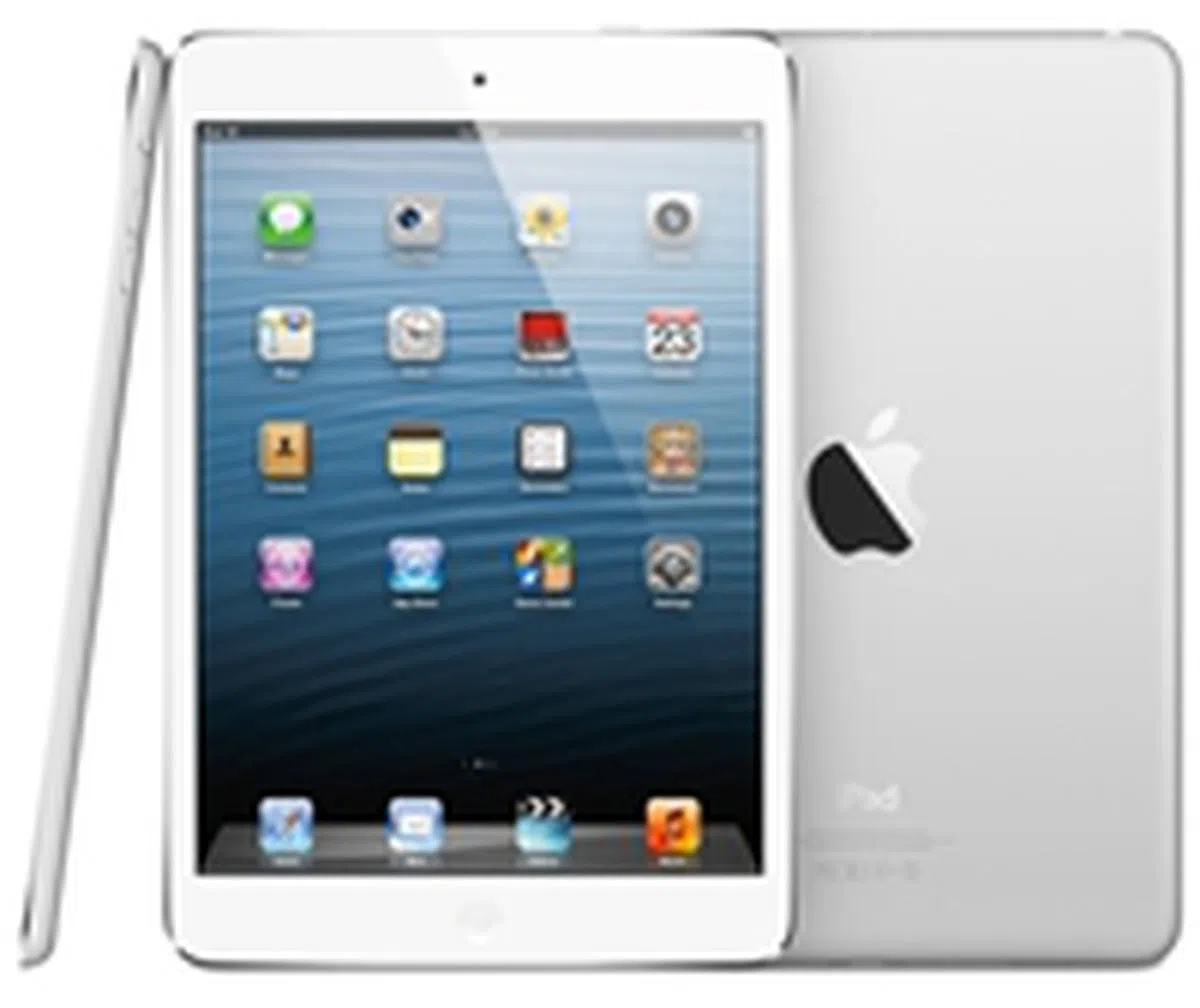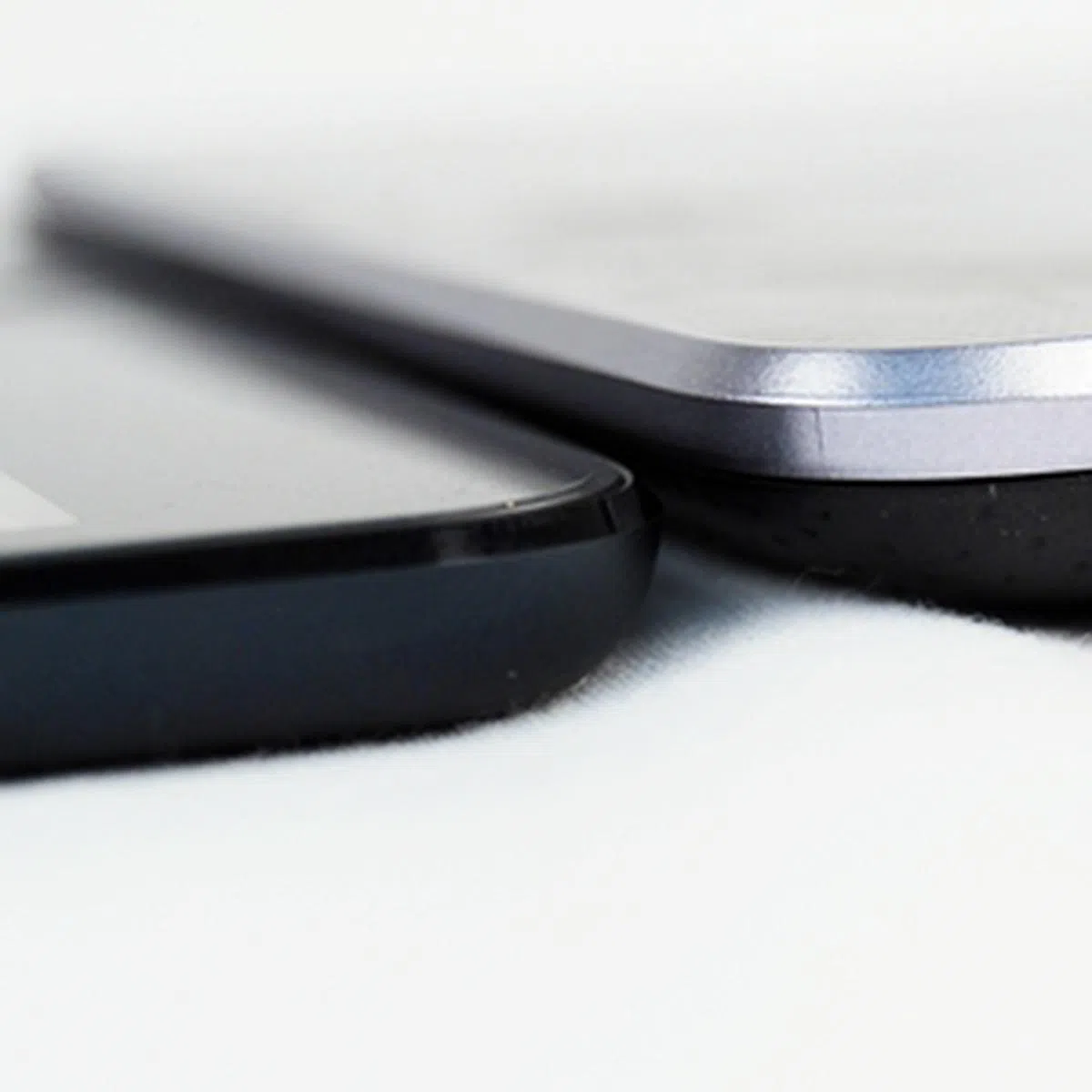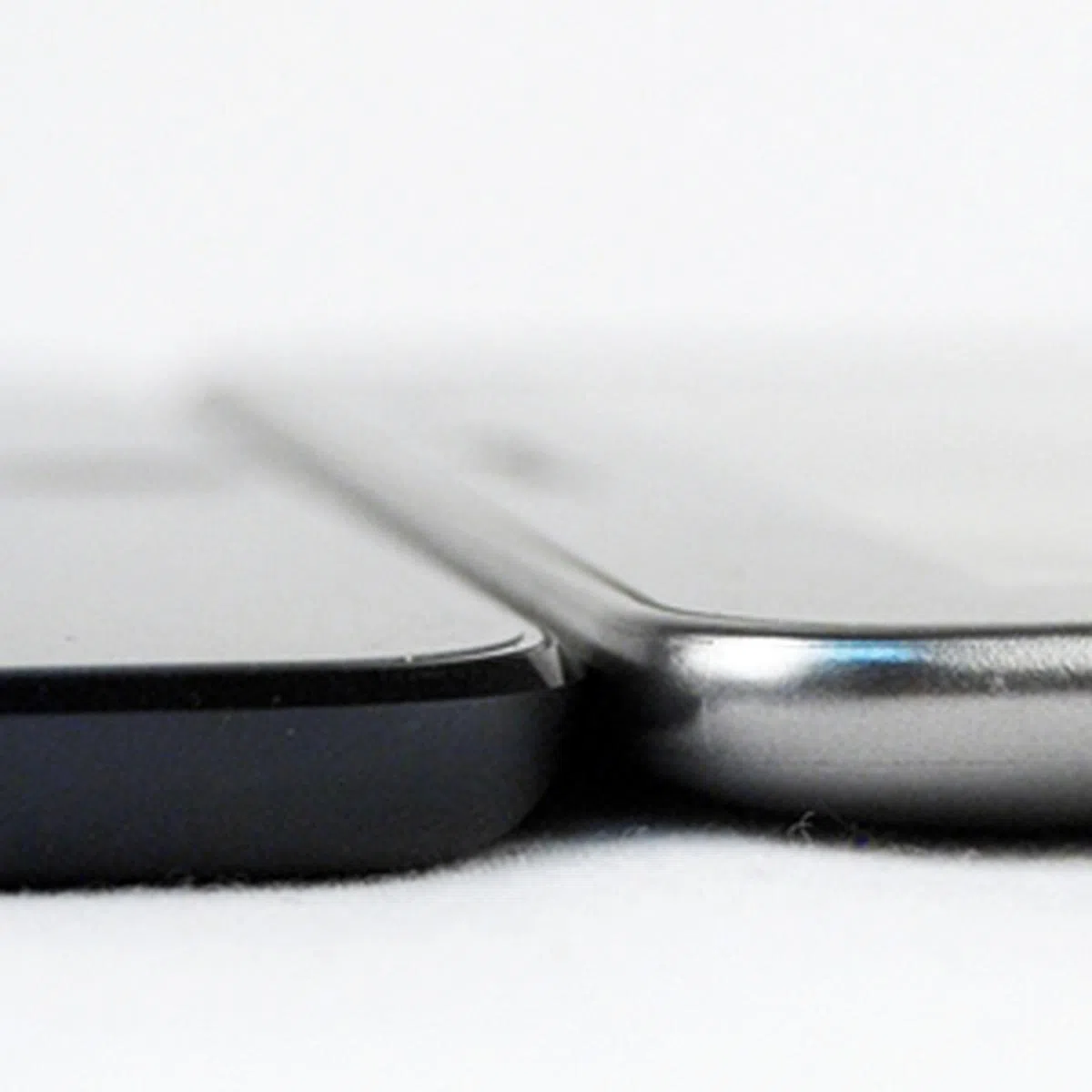Apple iPad Mini - The Mini Cooper of 7-inch Tablets (Updated)
The Apple iPad Mini is the company's first attempt to break into the 7-inch tablet territory. Commanding a premium price and sporting specs of yesteryear, can the iPad Mini still be "the competition's worst nightmare"? Read on to find out our opinion.
**Updated on 7th November 2012**
We've updated our earlier released article on 5th November with a full report on the iPad Mini's battery performance and an updated conclusion to complete this review. If you've read our article initially, you can jump straight to the performance and conclusion page.
Overview
The 7-inch tablet market boomed when Amazon unveiled the US$199 Kindle Fire in late September 2011. Sporting a 7-inch display, a dual-core chipset and a customized interface of Android, the Amazon Kindle Fire presented itself as a viable tablet alternative to the Apple iPads and became the top selling Android tablet in the U.S market.
Google joined the scene in June 2012 with the unveiling of the Nexus 7, which is priced competitively with Amazon's offerings and comes with superior specs. As we wrote in our review, the Nexus 7 is unrivaled in terms of performance, design, features and value. Sales of the Nexus 7 soared in the past few months from 500,000 units in July to nearly one million in October.
At the same time, the rumor mill was spinning reports after reports of a smaller iPad in the works. Similar to how the rumor mill hit the bull's eyes on the Apple iPhone 5, the smaller iPad was more or less the same device we've seen in leaks. On 23rd October, Apple finally launched the iPad Mini.
The immediate reactions were not positive as critics blasted Apple for pricing the tablet way above expectations and the competition. Moreover, the iPad Mini was inferior in some aspects. The small turn out at the launch event in Singapore seems to reinforce similar sentiments. So is the Apple iPad Mini a let down? Well, read on to find out. Here's a quick look at its specs: -
 | Key highlights of the Apple iPad Mini (Wi-Fi)
|
Design
Thin and light remains the key focus for Apple when it comes to designing its products (with the exception of the third generation iPad), and this theme is no doubt the key highlight for many of its new product releases which include the 13-inch MacBook Pro with Retina Display, the new iMac, the fifth-gen iPod Touch and the iPhone 5.
With a side profile of just 7.2mm, the iPad Mini is the thinnest tablet in the market at the moment and we foresee it remaining so for at least the rest of the year. Its closest rivals in terms of sleekness are the Toshiba Excite 7.7 (7.6mm) and Toshiba Excite X10 (7.7mm). Within its family of iOS devices, the iPad Mini ranks second behind the 6.1mm thin iPod Touch and a step ahead of the 7.6mm thin iPhone 5.

The Apple iPad Mini (bottom) is the thinnest tablet at 7.2mm while the Samsung Galaxy Tab 7.7 (middle) measures a hairline thicker at 7.89mm, The Google Nexus 7 (top) is chunky at 10.45mm. Check out the close-up shots below for further scrutiny.
 |  |
The iPad Mini adds another world's first into its record by being the lightest mass market tablet. Why do we add the term, "mass market"? Well, Japanese carrier NTT DoCoMo recently unveiled the lightest tablet in the world at 249g. It remains to be seen whether that Android tablet will be available anywhere beyond the shores of Japan.

The Apple iPad Mini is so thin and light that you will have no problems holding it on one hand over a substantial period of time.
To be honest, words and photos cannot describe the sleekness and lightness of the iPad Mini. You have to feel it to know what we are trying to convey. Over the course of the review, the iPad Mini was handled by several of our colleagues and friends, and all of them were surprised at how light and thin the tablet was. This is despite the fact many of our colleagues have handled other 7-inch tablets, so the refinements made by Apple are noticeable even though the differences look insignificant on paper.
Taking design cues from the iPhone 5, the iPad Mini sports the same anodized aluminum back without the glass capping at the top and bottom. The metal chassis lends a very smooth but sturdy feel to the device, which is notably absent in competing tablets such as the Google Nexus 7 and Samsung Galaxy Tab devices.

The metallic finish may feel premium to the hands but it attracts smudges and fingerprints very easily.

Even the aluminum back casing of the Samsung Galaxy Tab 7.7 (middle) is no match for the premium feel and finish of the Apple iPad Mini (left). As for the Google Nexus 7, its dimpled pattern on the back gives a unique look and aids handling, but in some ways, it's still inferior to the Apple slate. Sadly, the Nexus 7 isn't any lighter even though it has a plastic case.
As it has the same finish as the iPhone 5, we have concerns over the chipping issues that plagued the phone. For now, the iPad Mini seems rugged enough to survive several days of usage since its launch without any scuff marks. Only time will tell if it's susceptible to those issues, so keep a watch for any of our future news updates or finding from our forum users.
The front of the iPad Mini is dominated by its 7.9-inch LED-backlit IPS display which has rather thin bezels along its sides. This is a deliberate design on the part of Apple so that it is able to fit a larger display in a device of its dimensions. As seen in the comparison photo below, it's hardly larger than its competitors and yet it boasts a larger screen. The main difference that made this possible is Apple's insistence to keep to a 4:3 screen aspect ratio as opposed to the more commonly seen 16:9 widescreen aspect ratio on the competing products. If you consider the third and fourth generation iPad's Retina display resolution of 2048 x 1536 pixels and the iPad Mini's 1024 x 768 pixels, both maintain the same 4:3 screen aspect ratio. As such, they are better equipped for browsing content while the screen is vertically orientated and promotes content consumption like reading journals and e-books. We'll discuss more on this on the next page as we assess the screen's performance.

As you can see, the bezels along the sides of the Apple iPad Mini's display are significantly thinner than the ones found on the Samsung Galaxy Tab 7.7 (center) and Google Nexus 7 (right).
The physical home button still resides at the bottom center of the screen while the top center houses the 1.2-megapixel FaceTime HD camera. On the top side of the iPad Mini are the 3.5mm audio jack on the far left and the Power button on the far right. Along the right side of the device are the silence/screen rotation lock, and separate volume controls. The Power button and volume controls are raised sufficiently and provide good tactile feedback. The bottom features a Lightning dock and twin speakers:-

The Apple iPad Mini is equipped with the same Lightning dock connector as the iPhone 5. Flanking its sides are two stereo speakers.
Features
Out of the box, the iPad Mini ships with iOS 6. Apple recently released an update, iOS 6.0.1 that is mainly targeted at iPhone 5 users. iOS 6.0.1 update brings improvements and bug fixes such as: -
- Fixes a bug that prevents iPhone 5 from installing software updates wirelessly over the air
- Fixes a bug where horizontal lines may be displayed across the keyboard
- Fixes an issue that could cause camera flash to not go off
- Improves reliability of iPhone 5 and iPod touch (5th generation) when connected to encrypted WPA2 Wi-Fi networks
- Resolves an issue that prevents iPhone from using the cellular network in some instances
- Consolidated the Use Cellular Data switch for iTunes Match
- Fixes a Passcode Lock bug which sometimes allowed access to Passbook pass details from lock screen
- Fixes a bug affecting Exchange meetings
One unique feature embedded in the software of the iPad Mini is its ability to reject unwanted touches on the sides of the display. With thinner bezels, you are more than likely to be touching the screen while holding it. According to Apple, the iPad Mini is able to recognize whether your thumb (or finger) is simply resting on the display or whether you're intentionally interacting with it. The feature worked most of the time as claimed, although it sometimes rejected the touches we intended. In our video coverage of the iPad Mini's launch locally, we also showed the "smart function" in action while browsing our website: -
Performance
On the surface, the iPad Mini is equipped with the same A5 dual-core processor as the iPhone 4S and iPad 2. However, Apple quietly tweaked the processor to fit the requirements of the device - to be smaller. A recent teardown by Chipworks reveals that Apple built the A5 processor of the iPad Mini on a 32nm production process. In case you don't know, the first gen-A5 chip was built on a 45nm manufacturing process technology.
Apple uses the improved 32nm process technology to produce a smaller A5 chip to fit into the 7.2mm thin chassis of the iPad Mini. Moreover, the improved process technology of these chips make them more energy-efficient and would help to reduce excessive heat emission, which is a nagging issue on the third-gen iPad.
Even though the iPad Mini ships with only 512MB RAM, the user experience was snappy and in no way inferior to the 1GB RAM-touting Android tablets. Compared to the third-gen iPad, the speed of operation was noticeably slower especially when opening graphics-intensive apps such as games. Even so, it's not really downgrading your experiencing and we feel that there is no reason to doubt that you are getting sub par usability on the iPad Mini.
Web Browsing
Device | Apple iPad Mini | Google Nexus 7 | Samsung Galaxy Tab 2 (7.0) | Samsung Galaxy Tab 7.7 | Toshiba Regza AT270 |
CPU | Apple A5 dual-core (1GHz) | NVIDIA Tegra 3 quad-core (1.2GHz) | TI OMAP 4430 dual-core
(1GHz) | Exynos dual-core
(1.4GHz) | NVIDIA Tegra 3 quad-core
(1.2GHz) |
GPU | PowerVR SGX543MP2 | 12-core GeForce | PowerVR SGX540 | Mali-400MP | 12-core GeForce |
RAM | 512MB | 1GB | 1GB | 1GB | 1GB |
OS | Apple iOS 6.0.1 | Android 4.1.1 | Google Android 4.0.4 | Google Android 4.0.4 | Android 4.0.3 |

Once again, Apple proved that good performance has no co-relation with having the latest and best hardware. In the SunSpider JavaScript benchmark where each tablet is assessed on its browsing performance, the iPad Mini managed to surge ahead of the NVIDIA Tegra 3-powered Google Nexus 7 and Toshiba Regza Tablet AT270. It is on par with the Galaxy Tab 7.7, which recently had its software updated to Android 4.0.4. Number crunching aside, the web browsing experience on the iPad Mini was generally smooth.
Multimedia Performance
One of the most talked about aspects of the iPad Mini is no doubt its 7.9-inch display. With a resolution of 1,024 x 768 pixels, the iPad Mini is clearly behind the competition in terms of display resolution.
Having reviewed other tablets with higher display resolutions, the difference is obvious to our eyes - text and graphics looked a little pixelated. We can't blame critics or consumers who are disappointed with the display of the iPad Mini. After all, Apple has spoilt everyone with the eye-popping Retina displays on the iPhone 4/4S/5 and third/fourth generation iPads. Here's a comparison of display resolution between the 7-inch tablets: -
- Apple iPad Mini - 1024 x 768 pixels (163ppi)
- Google Nexus 7 - 1280 x 720 pixels (216ppi)
- Samsung Galaxy Tab 2 (7.0) - 1024 x 768 pixels (170ppi)
- Samsung Galaxy Tab 7.7 - 1280 x 800 pixels (196ppi)
- Toshiba Regza Tablet AT270 - 1280 x 800 pixels (196ppi)
Despite having a slightly bigger display, the iPad Mini does not necessarily show more content in portrait mode. During the launch of the iPad Mini, Apple demonstrated on stage that the iPad Mini could display more. Well, it depends on how you see it or how you use the tablet.

In landscape mode, the Apple iPad Mini obviously shows more details due to its 1024 x 768 pixels display resolution, which has 48 more pixels (width) compared to competing Android tablets.<br>Image source: The Verge

When we compare the screenshots taken from the Google Nexus 7(left), Samsung Galaxy Tab 7.7 (center) and Apple iPad Mini (right), the Apple slate displays lesser content although details are larger.
As seen from the photos we've put together, the iPad Mini has its advantages sometimes - depending on the app optimization and the task at hand. Videos are generally better handled by the widescreen Android tablets due to their 16:9 and 16:10 aspect ratio screen designs that ensure you see more of the widescreen videos without the dreaded black bars wasting screen space. Browsing websites has pros and cons - pro because the screen easier to read with a lower resolution, con because it's not sharp and shows lesser content as opposed to higher resolution Android tablets.
Apple also proudly boasted about having more than 275,000 apps optimized for use on the iPads (the iPad Mini's screen resolution is identical to the first and second generation iPads) whereas Android tablets suffer from having only a handful of such apps. Tablet optimized reader apps on the Apple ecosystem are more intuitively designed and offer best screen space optimization, thus they are better than the Android equivalents. Elsewhere like in Facebook, the tablet optimized apps do pay off in multimedia viewing experience as they are more enjoyable on the iPads than on other tablets. We illustrate the couple of examples that we've sighted:-

The Apple iPad Mini will have an edge over Android tablets if you like to read magazines or e-books. On the Zinio app, magazines such as our HardwareMag are rendered and optimized to fit the screen properly as seen on the right-most screen shot with the iPad Mini.

Facebook is one of the many apps that are optimized for use on Apple iPads. As seen here, the Facebook interface on the Google Nexus 7 (left) and Samsung Galaxy Tab 7.7 (center) are merely blown-up versions of what you see on Android phones. On the Apple iPad Mini (right), things are different with developers taking the extra effort to optimize the Facebook app to make full use of the available screen estate.
Imaging Performance
The iPad Mini is equipped with a 5-megapixel rear autofocus camera with backside illumination and five-element lens with f/2.4 aperture. It seems that Apple is standardizing the same advanced optics across its iPhone and iPad devices with the exception of the megapixel count.

Image quality is reasonably good with colors and contrast that are fairly accurate. Below, we've close-up shots for comparison.
Battery Performance
Apple claims that the 4400mAh battery of the iPad Mini is able to provide up to 10 hours of web surfing, watching videos or listening to music. We are in the midst of conducting our standard battery test and will update this section as soon as the battery test ends. So check beck again tomorrow for the full performance findings. For now, the iPad Mini seems to be holding up quite well.
*Updated as of 7th November 2012, 2:30am:-
We ran the iPad Mini on an intensive battery test, which involves a video with a resolution of 1280 x 720 pixels being looped on the unit. The test is performed under specific parameters such as:-
- Screen brightness and volume at 100%
- Wi-Fi and Bluetooth connectivity turned on
- Constant data streaming through email and Twitter
Specifications/Device | Apple iPad Mini | Google Nexus 7 | Samsung Galaxy Tab 2 (7.0) | Samsung Galaxy Tab 7.7 | Toshiba Regza Tablet AT270 |
Processor |
|
|
|
|
|
Display Size |
|
|
|
|
|
Display Type |
|
|
|
|
|
Display Resolution |
|
|
|
|
|
Dimensions |
|
|
|
|
|
Weight |
|
|
|
|
|
Battery Capacity |
|
|
|
|
|

To our surprise, the iPad Mini only managed to last slightly over 7 hours despite its 4,440mAh battery. We ran the battery test twice and results turned out to be similar. Although the iPad Mini has the biggest display (7.9-inch) among the tablets compared, the Samsung Galaxy Tab 7.7. managed to last a whopping 11 hours and 44 minutes on its 7.7-inch Super AMOLED Plus display.
Perhaps the more power-efficient AMOLED screen and larger battery capacity (5,100mAh) gave the Galaxy Tab 7.7 extra juice to last that long. Apple, which was once known for its power efficiency, doesn't seem to fare as well as some of the compared tablets in this aspect. Even the third generation iPad faltered in our battery test too. The Power Consumption chart reinforces our assumption that the iPad Mini does indeed have a higher power draw.
The iPad Mini took a dive in the Portability Index, where each device is assessed on how well it balances battery life with their physical attributes (weight and volume). Despite being the thinnest and one of the lightest tablets in its class, the uninspiring battery mileage of the iPad Mini caused it to slip behind its main competitors (the Nexus 7 and Galaxy Tab 7.7) by significant margins.
During normal day-to-day usage, the iPad Mini was able to last more than a day of emailing, web browsing, surfing social networking sites and some games. Fortunately for the iPad Mini, we did not encounter any unusual heating issues on the back of the device. As always, actual battery mileage will vary depending on actual usage conditions.
Conclusion
*Updated as of 7th November 2012, 2:30am
Retailing at S$448 (16GB), S$578 (32GB) and S$708 (64GB), the Apple iPad Mini (Wi-Fi) is priced at a premium over competing tablets. For example, the Google Nexus 7 (16GB) Wi-Fi is priced at S$399 while the Samsung Galaxy Tab 2 (7.0) 3G 16GB model comes in at S$498.
Both Android tablets offer users the flexibility and freedom to customize the user interfaces. Moreover, Android users are not tied down by a program (iTunes in Apple's case) to transfer multimedia content unlike the Apple iPads.
However, Apple has its strong ecosystem of developers and tablet-optimized apps to justify the premium prices that the iPad Minis are commanding. In addition, you cannot discount the fact that the iPad Mini is leaps and bounds ahead of any competing tablet in terms of design and build quality.
To put things into perspective, this situation is similar to the automobile industry where the Mini Coopers are considered quite expensive for its class. Other cars, which offer more passenger space, leg room and features at lower prices are better deals for people who are looking to stretch their dollar value. However, there will still be people who prefer the Mini Cooper because of its uniqueness, branding and retro image.
Having said that, the iPad Mini is still an impressive tablet that will appeal to consumers who prioritize design, looks and quality of apps over the price factor. The biggest nitpick we've noticed is the often mentioned comparison against the Google Nexus 7 where the iPad Mini has a lower screen resolution, lack of direct connectivity via USB, higher price and from our testing, less than expected battery life. Common aspects between both of the devices are that they both lack expandable storage options and 3G/4G support (for which the iPad Mini will debut this edition later in the year at a more notable premium). However, the iPad Mini's advantages over the Nexus 7 are its various built-in storage capacity editions, much better handling, sleeker and lighter build, larger screen, better optimized tablet apps of greater quantity, superior camera capabilities and better overall usability. Despite the improvements on the Android platform, the fluid usage experience on the iPad and iPad Mini is unrivaled.
So yes, the Google Nexus 7 comes out better only in price, better screen resolution and a much longer up-time. If you're not looking for anything more than these intrinsic values, it's definitely a better choice. However, the iPad Mini chalks up plus points elsewhere in usability, handling and another set of features that can vouch for its own price point. Aside from its lower-resolution display, middling battery life and higher price points, there's not much to dislike about the Apple iPad Mini. What we have to iterate is that the iPad Mini is best experienced to form a personal opinion rather than reading technical specs that may not convey its strong emphasis in design and usability. As we've shown earlier in the article, even the amount of effort put in by the app developer can make a big difference to your tablet usage experience that's currently Apple's forte.
If the Apple iPad Mini had come with a higher resolution or a Retina display and a longer lasting battery, it would without a doubt been "the competition's worst nightmare". For now, we deem the iPad Mini as Apple's warning shot to the competition to show who's the real boss in the tablet scene.
For those waiting out for the iPad Mini edition with 3G/4G data connectivity, it remains to be seen how it would be priced to compete - if at all the price is adjusted once it's made available (which is quite unlikely). For one, it's far more expensive than the Samsung Galaxy Tab 2 (7.0) 3G edition, but we reckon that the iPad Mini is generally superior to it for any direct competition. However, the Samsung Galaxy Tab 7.7 and Toshiba Regza AT270 are much more closer competitors at its price point. We'll assess these comparisons once the data connectivity enabled iPad Mini are made available in the near future. For now, our verdict is solely on the Wi-Fi edition only.
Our articles may contain affiliate links. If you buy through these links, we may earn a small commission.

